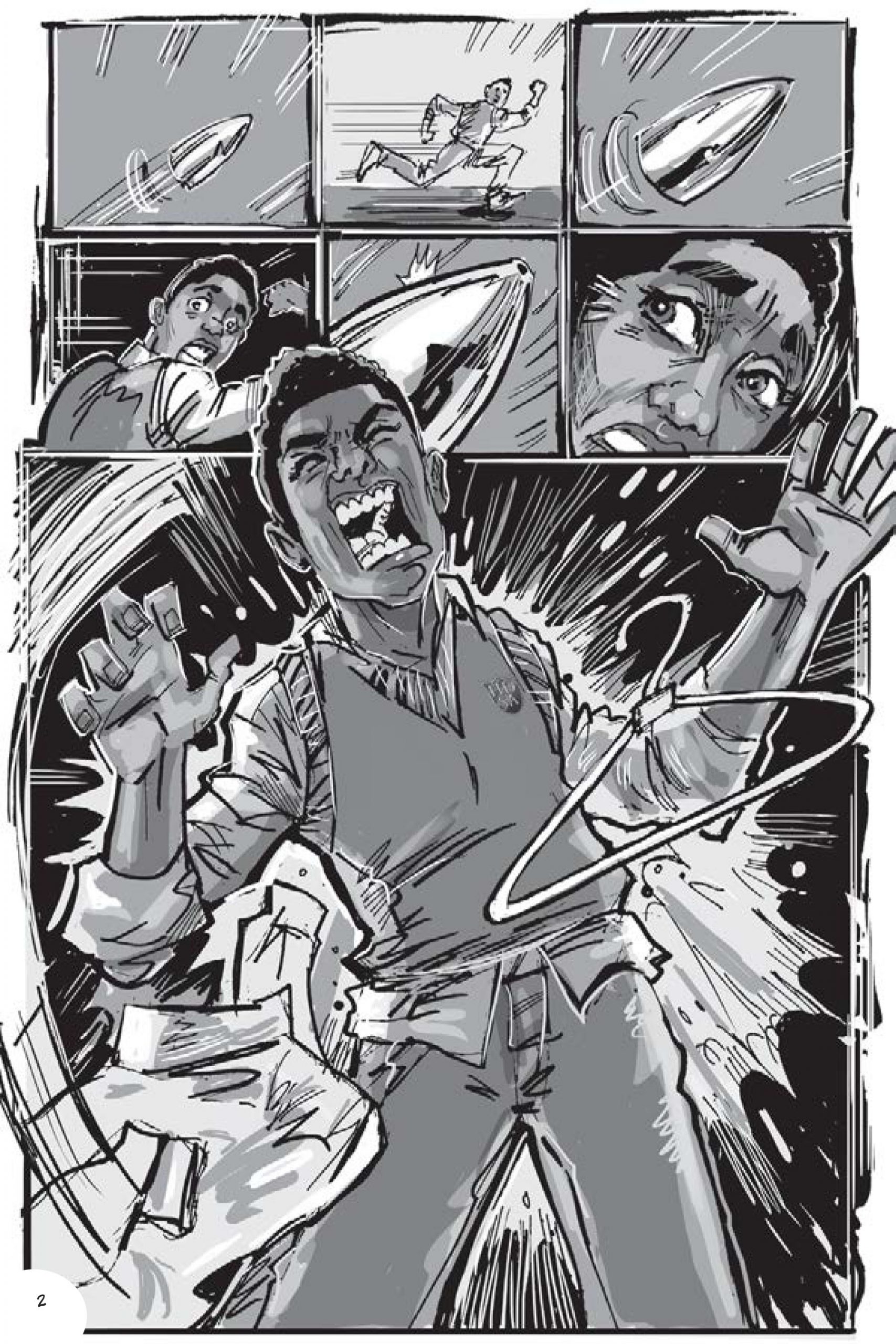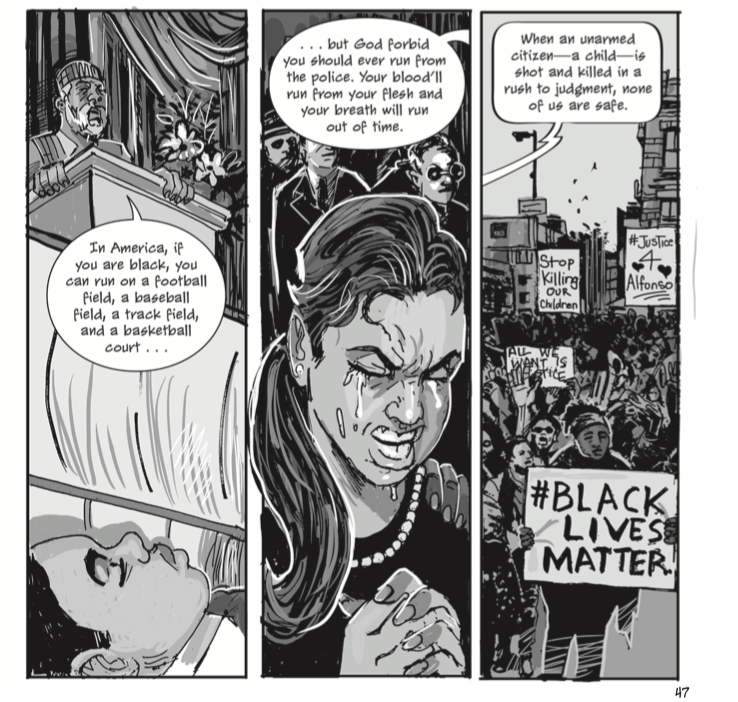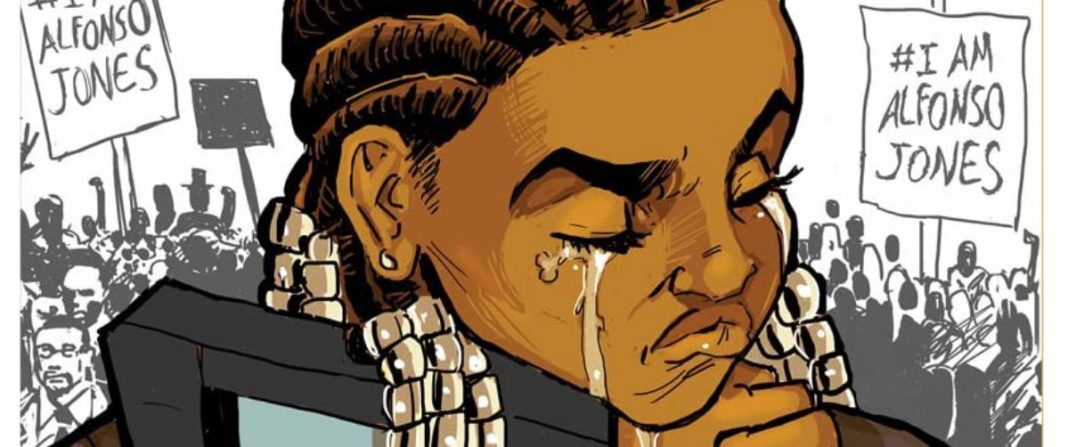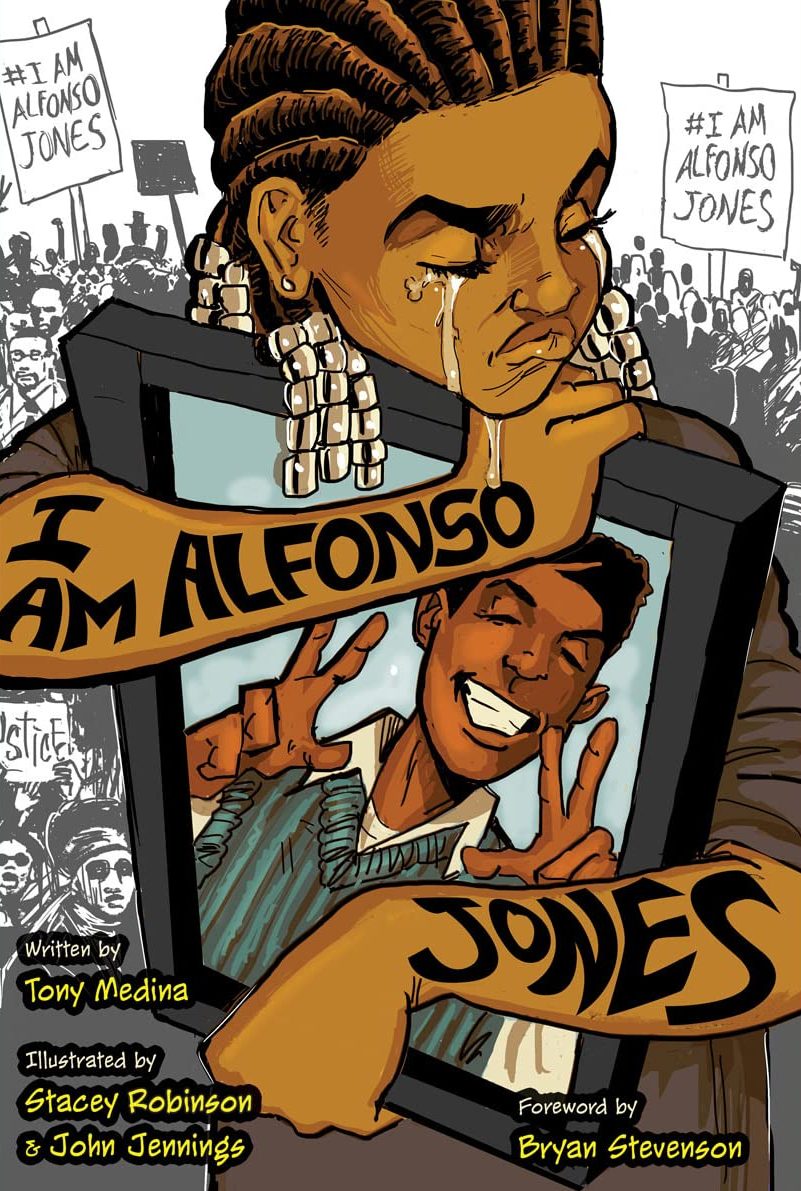I Am Alfonso Jones
Written by Tony Medina
Illustrated by Stacey Robinson & John Jennings
Foreward by Bryan Stevenson
Published by Lee & Low Books
There’s no textbook or class on how to be black in America. No curriculum or training course dedicated entirely to preparing black students for the treatment they will surely get just by walking the streets of their country. This is how the Executive Director of the Equal Justice Initiative, Bryan Stevenson, starts his foreword for the book I Am Alfonso Jones, a comic book about a young black Puerto Rican who’s shot down by an off-duty police officer while buying a suit.
Much like the foreword, I Am Alfonso Jones aims to educate its readers through a story that considers questions and perspectives not usually given the exposition they deserve. In doing so, it takes the idea of truly offering new perspectives on the topic to heart. In other words, whenever someone asks you what it means to “move the conversation forward” regarding black lives and police brutality, direct them to this book.
Written by Tony Medina and illustrated by Stacey Robinson & John Jennings, I Am Alfonso Jones follows the titular Alfonso in both life and afterlife as he is shot while inside a store by an off-duty cop. The shooter mistook a clothes hanger Alfonso was holding in his hand with a handgun.
In real life, this story would’ve taken a sharp turn into flashes of media figures voicing their positions, and images of social unrest flooding the nation. In contrast, this book slows it down a bit. It decides to follow Alfonso’s ghost immediately after his killing as he is pulled into a train thats riders are also the ghosts of black people who were shot down by the police. It sticks with the victim to give readers a close look at the things that get lost forever every time the police take an innocent black life away.

This setup allows Medina, Robinson, and Jennings to give readers a rare look at the immediate impact the death of a young black man has on his community, his family, and his closest friends. While it also does take a step back to get a sense of the national reaction these types of killings inspire in people, focusing on the things that could’ve been had Alfonso not been killed is mighty powerful and worthy of discussion.
The book holds to the idea that the loss of one life brings about a kind of agony that is not self-contained. Losing Alfonso, for instance, means that the possibility of a beautiful relationship between him and his crush doesn’t get to materialize. It means his mother has to deal with the loss of her son for the rest of her life. Alfonso’s ghost in the story is a reminder that life can’t be reduced to a single number. It multiplies and it changes everyone, especially those closest to the victim’s inner circle.
The ghosts that ride the train with Alfonso are all real-life victims of police violence, unable to move on until they get the justice they deserve. The train is a kind of Limbo for its passengers. They’re all waiting for their killers to face the possibility of jail-time, of some official recognition that the police were in the wrong.

Among those riding the train are Eleanor Bumpurs, Anthony Baez, Amadou Diallo, and poet Henry Dumas. Their presence offers readers a chance to piece together some kind of continuity, a guiding thread that connects each death to a broken, corrupt system that puts a target on black lives. These real figures tell their stories, educating both Alfonso and the reader, and inviting dialogue. The book’s intent is not to fetishize violence and death. Instead, it’s a call for remembrance in service of education and making people aware of America’s history of police brutality as a problem that can and must be solved.
I Am Alfonso Jones isn’t meant to be light read. Not engaging with its contents in an active and inquisitive manner just doesn’t cut it here. The book demands to be read so that it can educate in a very honest and sensible way. It’s a book that needs to be read and reread now, in this particular moment. It might just be the closest we’ll get to a guide or a textbook on why black lives matter.









